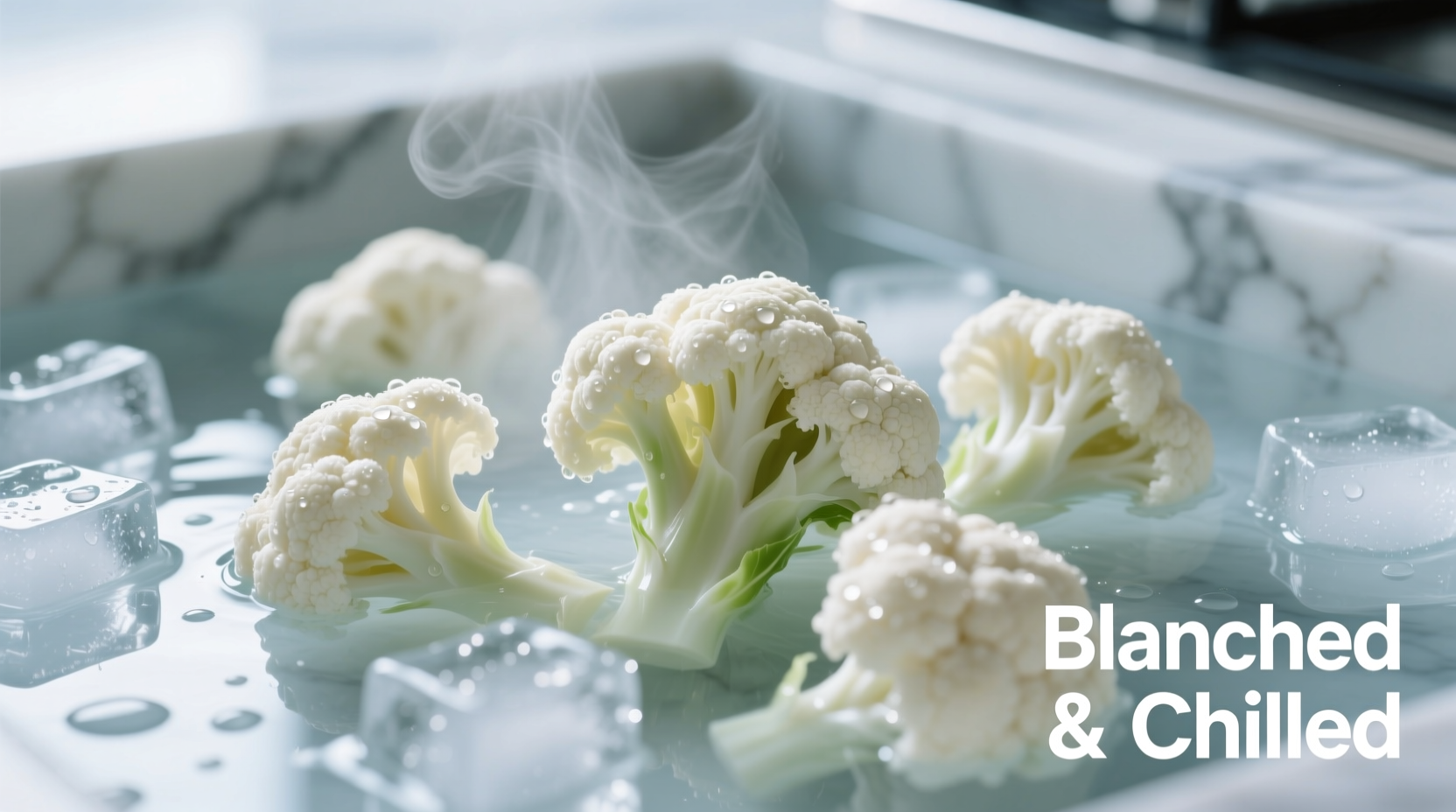Blanching cauliflower isn't just another kitchen step—it's the critical process that stops enzyme activity responsible for flavor loss, discoloration, and texture degradation during freezing. Without proper blanching, your frozen cauliflower develops off-flavors within weeks and turns mushy when cooked. The USDA's National Center for Home Food Preservation confirms that under-blanching actually accelerates spoilage compared to not blanching at all, while over-blanching wastes nutrients and compromises texture.
Why Blanching Makes All the Difference
When cauliflower is harvested, natural enzymes continue working that eventually break down color, flavor, and texture. Freezing slows but doesn't stop these enzymes. The Food Science Department at Cornell University explains that blanching deactivates these enzymes through brief heat exposure, preserving quality during frozen storage. This process also cleans the surface, reduces microbial load, and helps retain vitamins better than raw freezing.
Your Step-by-Step Blanching Guide
Preparation Phase: Setting Up for Success
Start with fresh, firm cauliflower heads showing no brown spots. The University of California Davis Postharvest Technology Center recommends using cauliflower within 24 hours of purchase for optimal blanching results. Remove outer leaves and trim the stem flush with the florets. Cut into uniform 1½-inch pieces—this size ensures even heating without overcooking delicate centers.

The Blanching Process: Precision Timing Matters
Fill a large pot with enough water to cover the cauliflower by 2 inches, adding 1 tablespoon salt per gallon. Bring to a rolling boil before adding cauliflower. The critical timing window is 3 minutes for water blanching—any less leaves enzymes active, any more causes nutrient loss. For steam blanching (which preserves more water-soluble vitamins), extend to 5 minutes as documented in the USDA Complete Guide to Home Canning.
| Blanching Method | Optimal Time | Water Ratio | Best For |
|---|---|---|---|
| Water Blanching | 3 minutes | 1 gallon per 1 lb | Large batches, freezer prep |
| Steam Blanching | 5 minutes | N/A | Nutrient preservation |
| Microwave Blanching | Not recommended | N/A | Avoid for cauliflower |
Cooling and Drying: The Often-Missed Steps
Immediately transfer blanched cauliflower to an ice water bath using a slotted spoon. The cooling phase must be completed within 3 minutes—the same duration as blanching—to prevent residual heat from overcooking. Drain thoroughly in a colander, then spread in a single layer on clean kitchen towels. Air-dry for 10 minutes, turning once, until no visible moisture remains. This critical drying step prevents ice crystals from forming during freezing.
Freezing and Storage Best Practices
Flash-freeze individual florets on parchment-lined baking sheets for 1-2 hours before transferring to airtight containers. The National Center for Home Food Preservation specifies that proper flash-freezing prevents clumping and maintains individual floret integrity. Remove as much air as possible from storage containers—oxygen causes freezer burn and flavor degradation. Label with date and use within 12 months for best quality.
Troubleshooting Common Issues
Soggy results? You likely over-blanched or didn't cool quickly enough. Stick to the 3-minute rule and ensure your ice bath contains equal parts ice and water.
Discoloration? Brown spots indicate under-blanching. Increase time by 30 seconds next batch while maintaining the ice bath timing.
Off-flavors? This happens when cauliflower wasn't dried properly before freezing. Extend air-drying time and ensure no moisture remains between florets.
When Not to Blanch Cauliflower
Blanching isn't always necessary—skip it when preparing cauliflower for immediate roasting or steaming within 24 hours. The University of Minnesota Extension notes that blanching before same-day cooking can wash away surface sugars that contribute to caramelization. For soups and purees where texture isn't critical, raw freezing works acceptably though flavor diminishes faster.
Maximizing Your Blanched Cauliflower
Don't discard that blanching water—it's packed with nutrients! Freeze it in ice cube trays to use as vegetable stock in soups and sauces. When cooking from frozen, add blanched cauliflower directly to boiling water or hot pans without thawing to maintain texture. For roasting, toss frozen florets with oil and roast at 425°F for 25-30 minutes for perfect caramelization.











 浙公网安备
33010002000092号
浙公网安备
33010002000092号 浙B2-20120091-4
浙B2-20120091-4